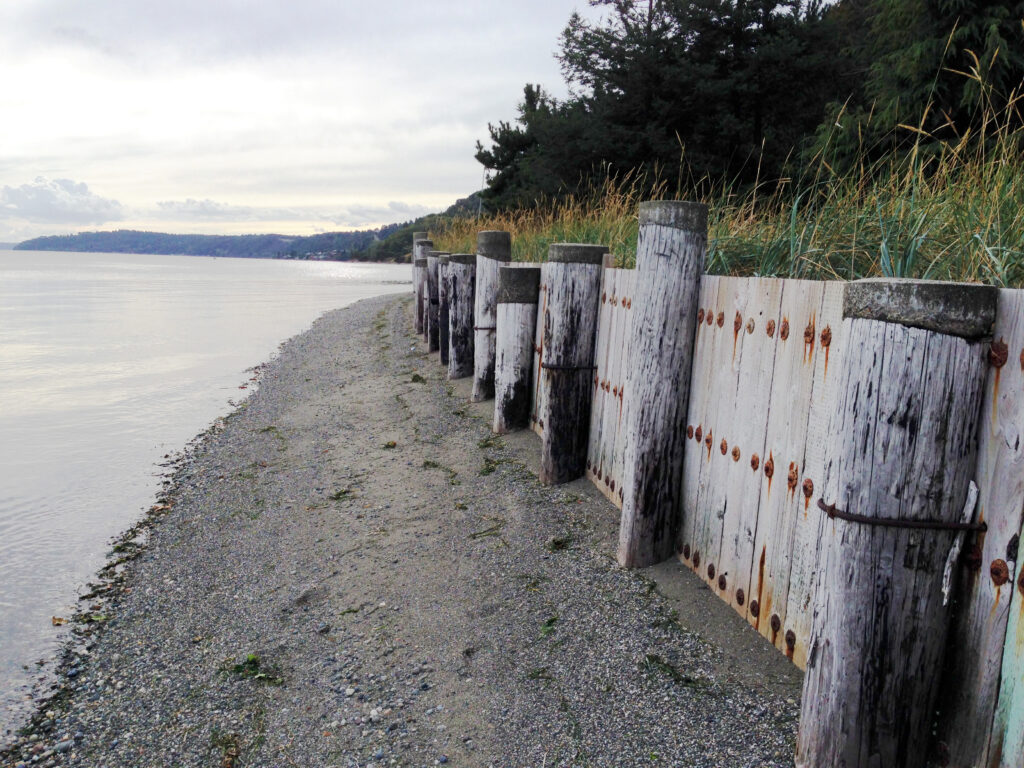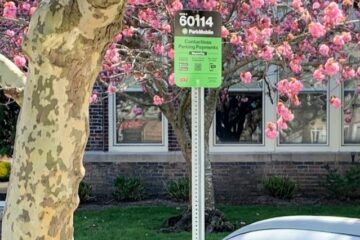
Bulkhead like this must be rebuilt at higher elevations.
By NANETTE LoBIONDO GALLOWAY
VENTNOR – The Board of Commissioners Thursday, April 13 funded the initial stages of the city’s Lower Ventnor Heights Resiliency Project which will help prevent major tidal and nuisance flooding in Ventnor Heights.
DeBlasio and Associates was awarded a $390,000 contract for engineering, design and permitting services to implement the plan in the low-lying area near the Dorset Avenue bridge.
DeBlasio also prepared the report that outlined what can be done to reduce flooding in the area. The report was funded with a $25,000 FEMA grant and took a year to complete. The report will allow the city to apply for additional FEMA grants to partially fund certain improvements. The report was prepared by coastal engineer Marc DeBlasio of DeBlasio Associates PC, with the assistance of city engineer Ed Stinson.
Mayor Lance Landgraf said the contract would include designs for the entire resiliency plan.
“We had money in a bond to pay for the design, which will be all-encompassing, including elevating roadways, curbs, gutters, pump stations and bulkheads, including those on private property,” he said.
According to the report, the study area in Ventnor Heights includes 400 homes, many of which were built at lower flood elevations, including some as low as 2 feet. Newer homes have been built at 7 feet, DeBlasio said when he presented the resiliency plan to the commissioners on March 23.
The report was developed to educate city officials and private property owners about current conditions and what can be done to mitigate damage from flooding. The study includes recommendations for capital infrastructure projects, preventive measures and how to protect natural resources. His recommendations included upgrading bayside infrastructure, rebuilding bulkheads at 8- or 9-foot elevations, building a new pump station and elevating roadways, which would be difficult, Landgraf said.
The report indicates that the tides rise above 2.5 feet flooding roadways 162 times a year but raising the roadways to 3 feet would reduce flooding to 62 days a year, raising them to 4 feet would reduce flooding to six times a year, and raising them 5 feet would eliminate flooding completely, DeBlasio said. However, raising the roadway while homes are still at lower elevations would be self-defeating.
“You need buy-in from private property owners,” who would have to also raise their homes, he said.
Landgraf said the report provided some good guidance on ways the city could mitigate flooding, although elevating roads and enforcing ordinances that require property owners to raise their bulkheads would be more difficult.
Stinson said the report was “extremely comprehensive” and gives the city the foundational tools needed to plan for the future.
“We should start with infrastructure to get water out of the area,” he said.
Improving infrastructure, such as installing a new pump station at Derby and Surrey avenues, improving check valves and other mechanical means to remove stormwater, will be costly, but having the plan will allow the city to apply for additional FEMA grants to share in the cost of improvements.
“The big hurdle will be the raising homes and private bulkheads,” he said.
Most of the city’s bulkheads are privately owned, and some are located below homes, with the lowest elevation at 2.3 feet and most at 5.2 feet. Only 16% of the 106 bulkheads surveyed comply with recommended elevations. The only bulkhead the city owns is located at Calvert and Harvard avenues.
“Raising it another 1.2 feet is inconsequential if private property owners don’t raise theirs as well,” DeBlasio said.
The city passed an ordinance a few years ago to require property owners to increase their bulkhead heights, but it has been difficult to enforce, Landgraf said.
“We have a lot of vulnerable bulkheads, and some people have skirted the rules,” especially when the improvements are expensive, he said.
DeBlasio said the city should continue to keep abreast of sea level rise, what other communities are doing to address flooding, and require property owners to build new homes at higher elevations.
Other options for the city to consider are buying out repetitive loss properties and maintaining involvement in the NJ Coastal Coalition.
Copyright Mediawize, LLC 2023


